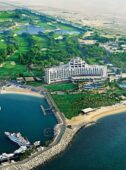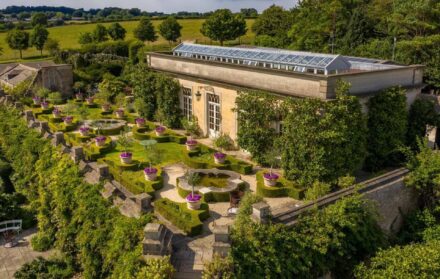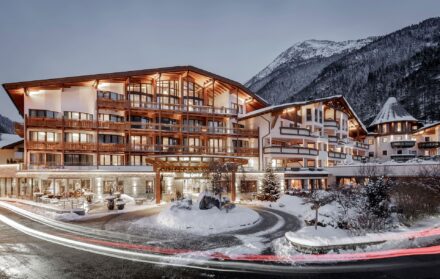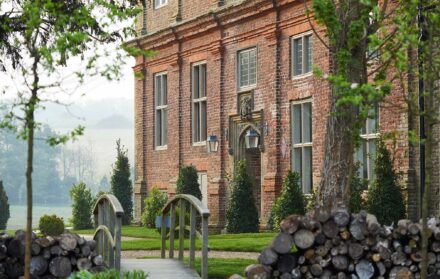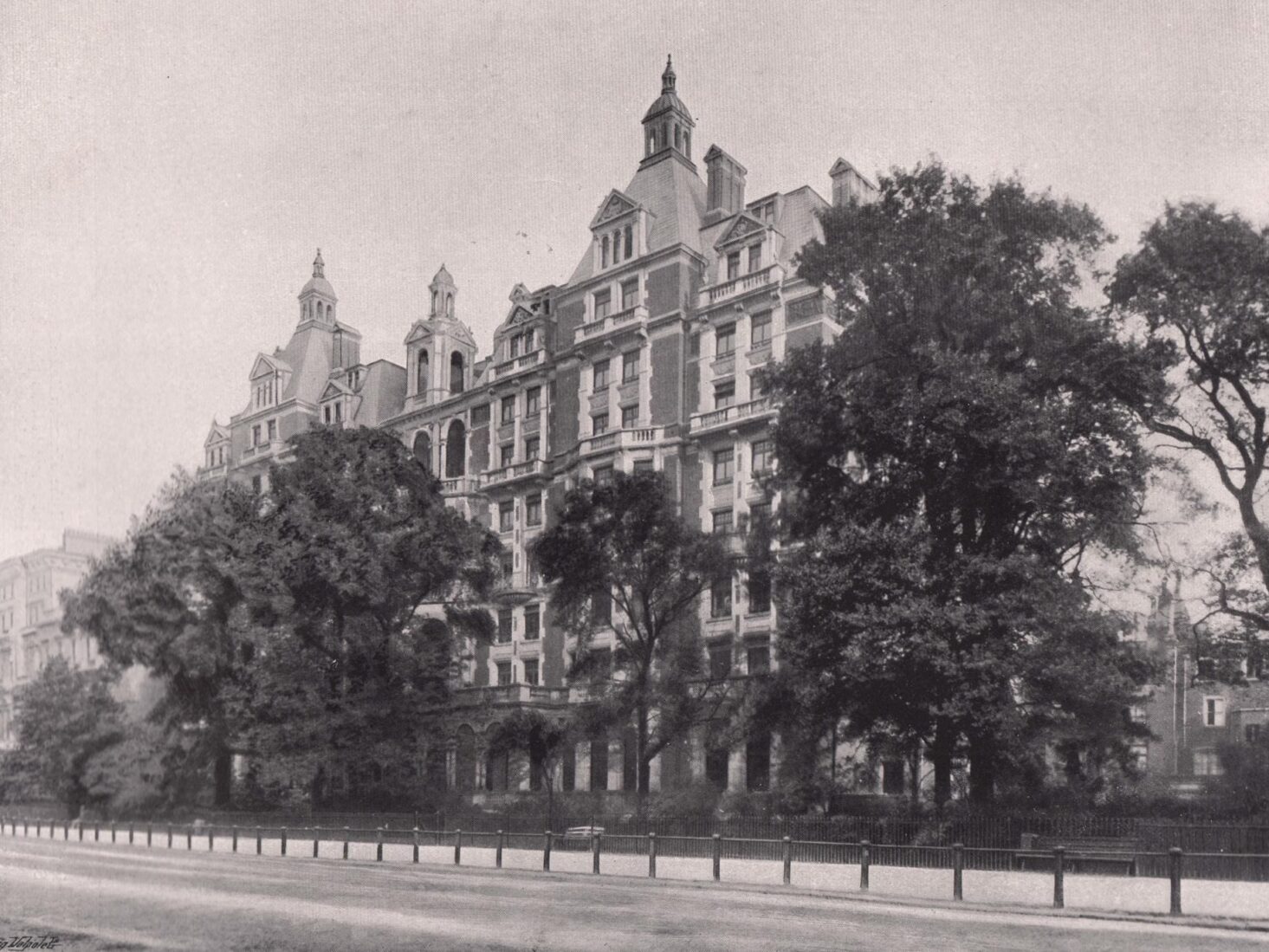
Hotel Review: Mandarin Oriental Hyde Park, London
Following a no-expense-spared, top-to-bottom refit, Mandarin Oriental Hyde Park reopens in of London’s most singular settings
Aesthetically speaking, there’s little to link 66 Knightsbridge with 100 Knightsbridge. The adjacent properties may share a plot of prime Monopoly real estate, but one is a soaring 19th-century chateau with turrets and chimneys; the other is a straight-lined, pre-credit-crunch shelter for the super-rich. Yet, when they were launched, both developments were billed as London’s most exclusive collection of apartments – and both elicited their fair share of controversy.
One Hyde Park, the modern complex at 100 Knightsbridge, provoked moral outrage from the Daily Mail soon after its completed in 2009. The development’s flagship penthouse, the newspaper discovered, had been purchased by Qatar’s Sheikh Hamad bin Jassim bin Jaber Al-Thani (the project’s key financial backer) through a company based in the Cayman Islands. The sheikh paid £40.5 million for the apartment, almost £100 million less than the asking price. The Guardian, doing some digging of its own, revealed that almost 80 per cent of the development’s 72 apartments had been purchased through similar offshore entities. Only a handful of flats had registered to pay council tax.
Hyde Park Court, seeking planning approval 120 years earlier, provoked reproach of a more aesthetic nature.
Plans to build a ‘residential club’ of 500 chambers received short shrift from local residents who argued that the proposed 100-ft building – one of the tallest in London at the time – would cast a shadow over the Serpentine Lake in neighbouring Hyde Park. To deter developers, detractors threatened to construct a giant wooden barrier that would prevent sunlight from reaching the mansion’s lower floors. When that failed, a bill was brought before Parliament, attempting to restrict the height of the building to 60ft.
Eventually, Parliament sided with the developers and, in 1889, Hyde Park Court and Club – ‘designed to meet the requirements of a large section of the upper classes, being men of first-class social standing, whose means may have not have permitted them to go to the great expense in housekeeping’ – opened its doors to London’s most eligible bachelors.
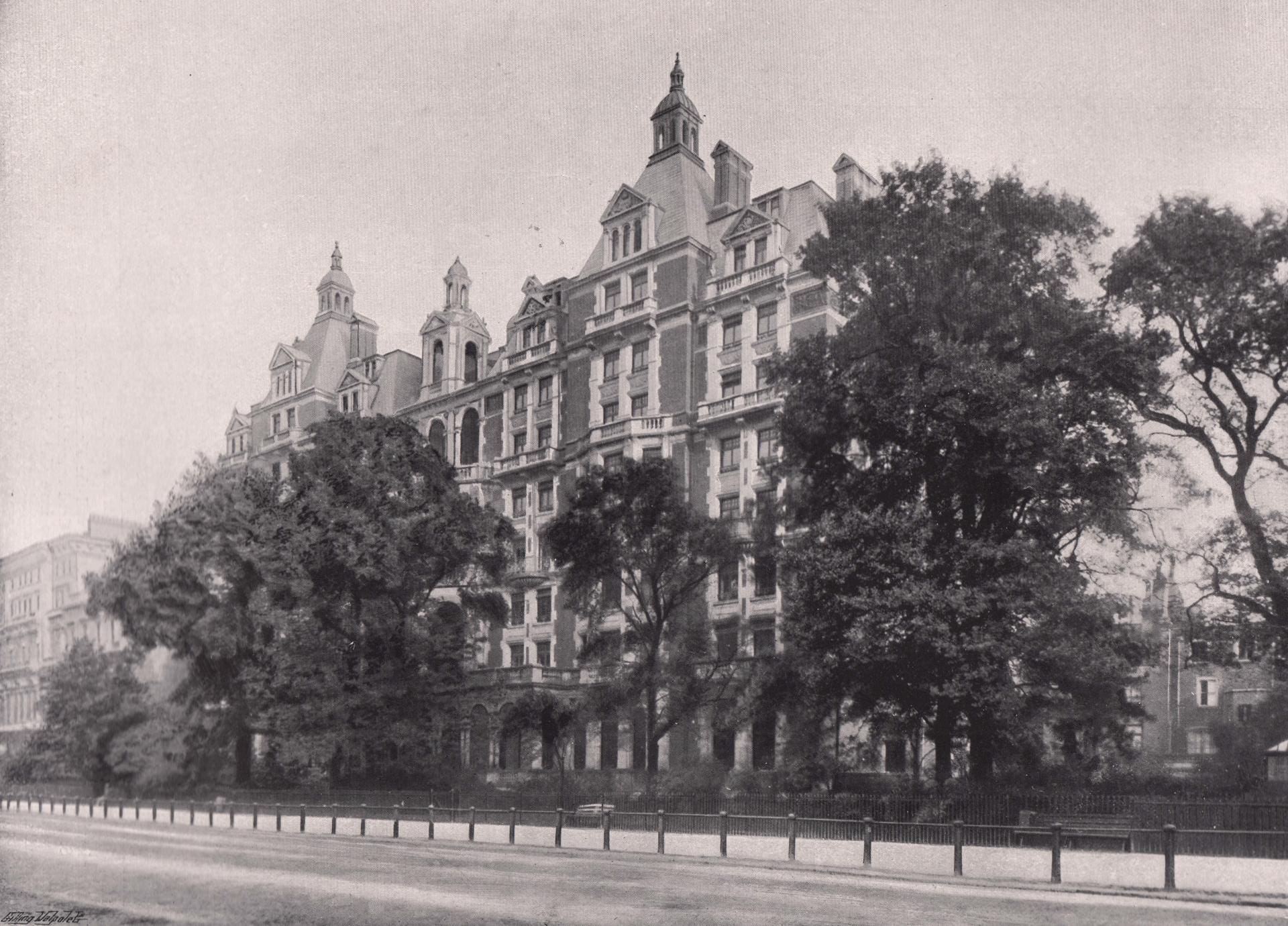

With its soaring spires, stepped gable and elaborate brick-and-stone façade, the building borrowed heavily from the Flemish Revival style – an architectural form that had flourished in Belgium and the Netherlands in the decade before.
In November 1996, Hyde Park Hotel – the mansion block, after filing for bankruptcy, had been converted into a hotel in 1898, operating, under various proprietors, as a hotel ever since – was purchased by the Mandarin Oriental Hotel Group for £86 million. In 2005, the hotel hosted the 80th birthday celebrations of Baroness Margaret Thatcher. In 2011, it welcomed the pre-wedding party of Their Royal Highnesses, The Duke and Duchess of Cambridge.
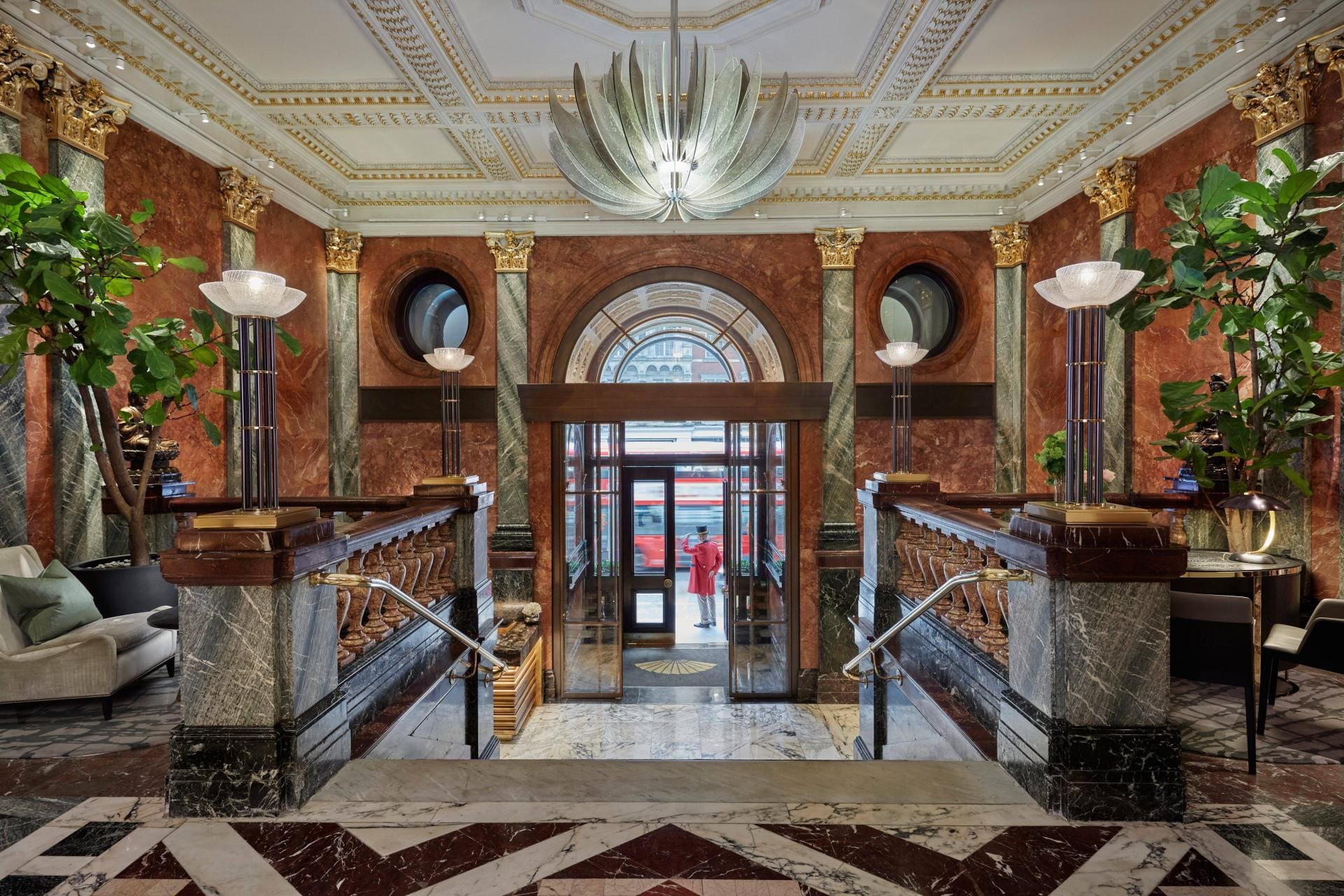
Had you exited Knightsbridge tube station from the Sloane Street exit between 2017 and 2018, you would have been met by a colossal collage by British pop artist Sir Peter Blake. Wrapped around the entire hotel, the artwork featured the faces of 100 of Mandarin Oriental’s most prominent guests, including Sir Paul McCartney, Dame Helen Mirren, Morgan Freeman and Whoopi Goldberg.
Renovations were interrupted in June 2018 when a fire forced singer Robbie Williams and his wife Ayda Field to evacuate via an external fire escape. A fully refitted Mandarin Oriental Hyde Park finally reopened its doors in April 2019.
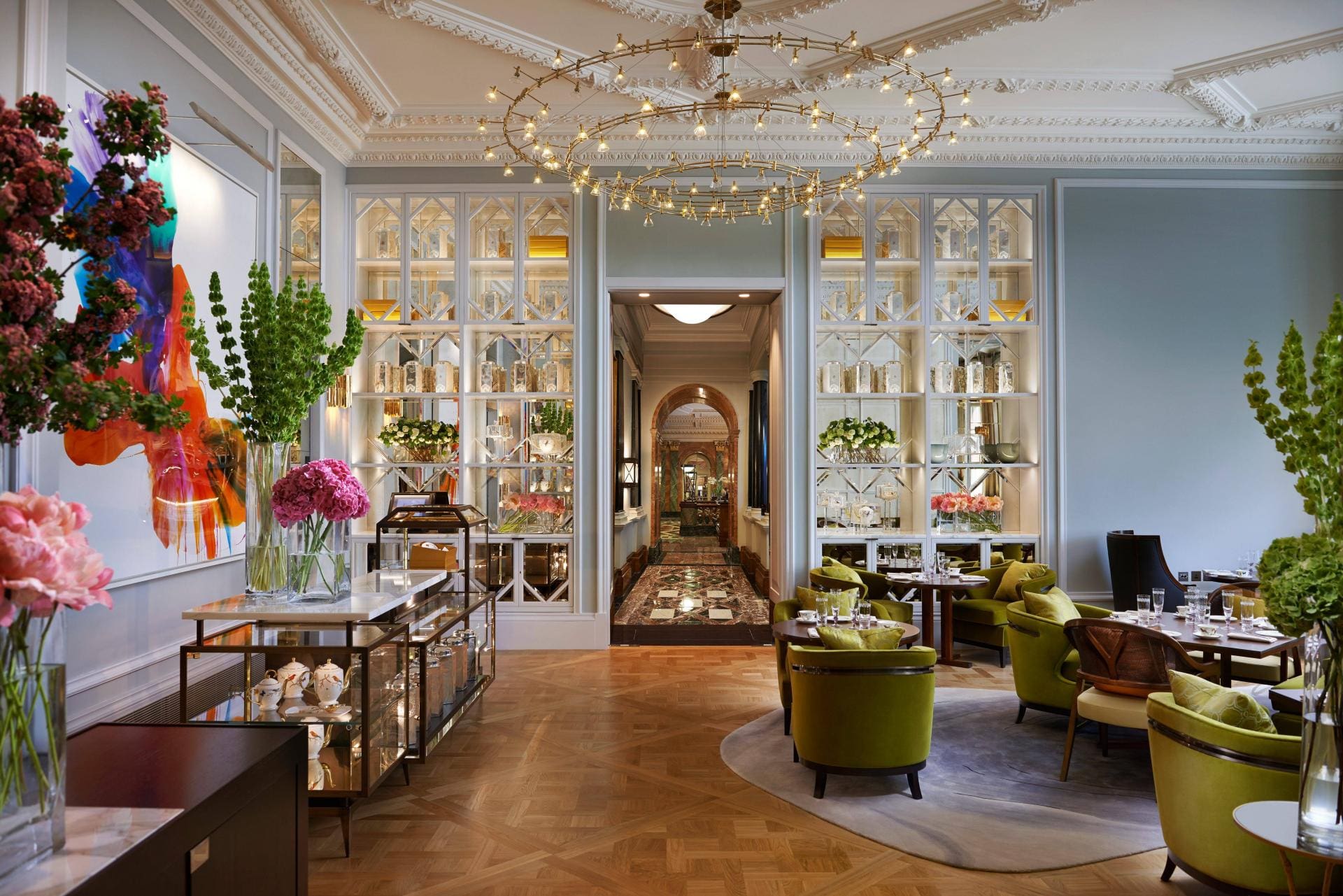
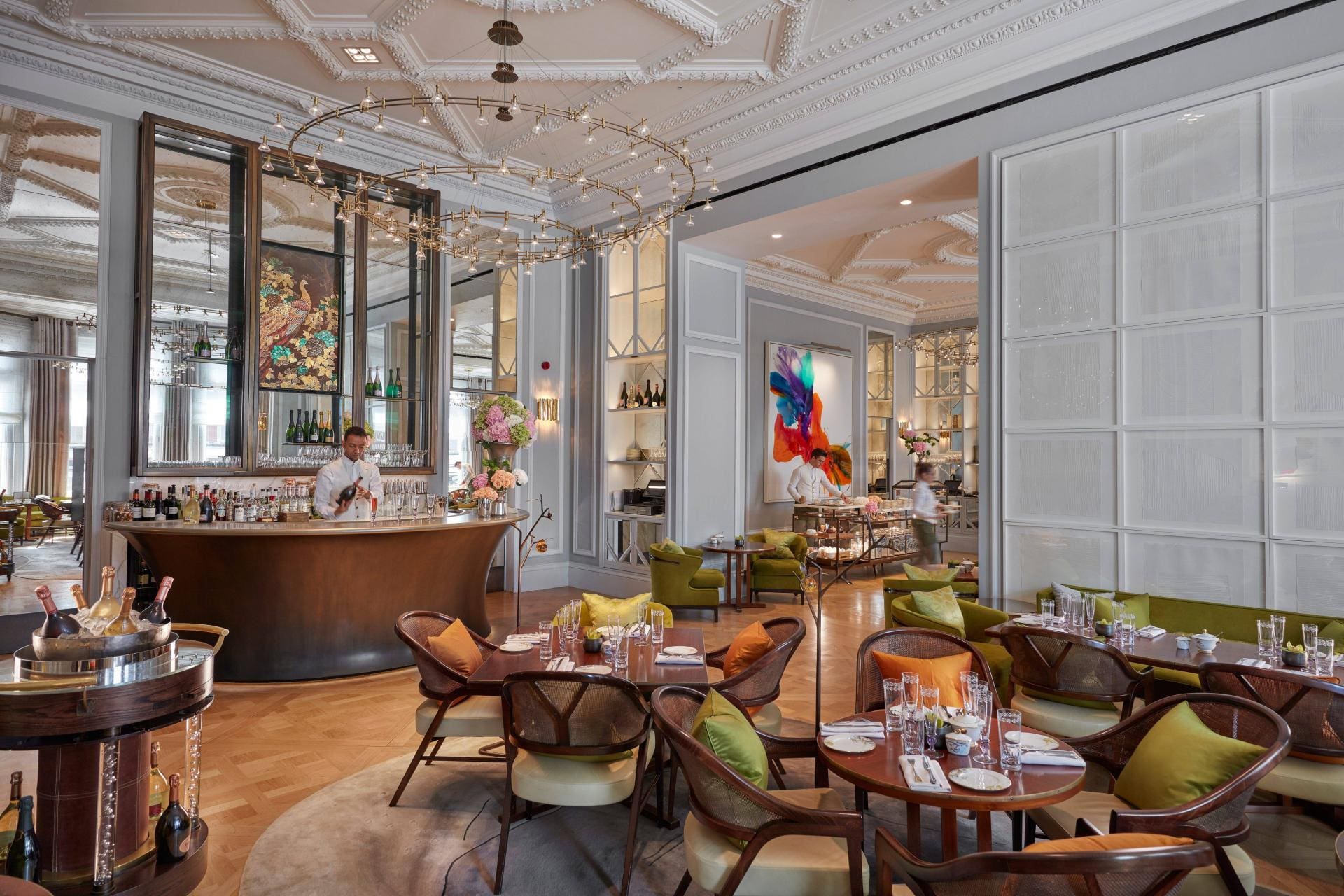
Rooms, reimagined by Hong Kong-based design doyen Joyce Wang, are now brighter and lighter – grey and gold and pastel and pretty. American Art Deco meets sleek Milanese appartamenti. All come with fresh fruit, GHD hair straighteners, Nespresso coffee machines, his and hers Miller Harris miniatures, Jo Hansford hair products and heated electric toilet seats that tickle your bottom. You’ll pay a premium for a room on the Hyde Park side of the hotel, but a bird’s-eye view of the park’s stately plane trees make it a premium worth paying.
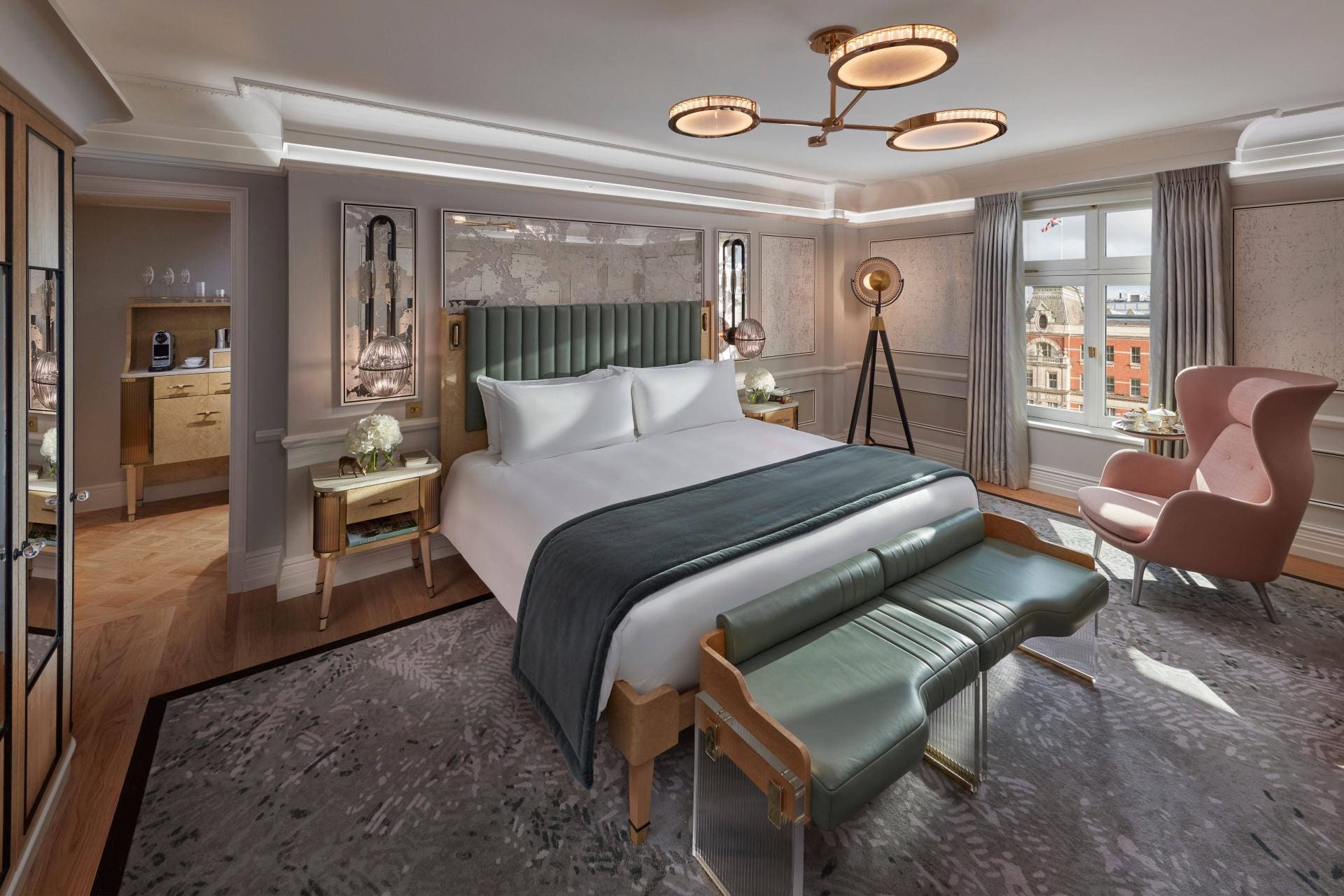
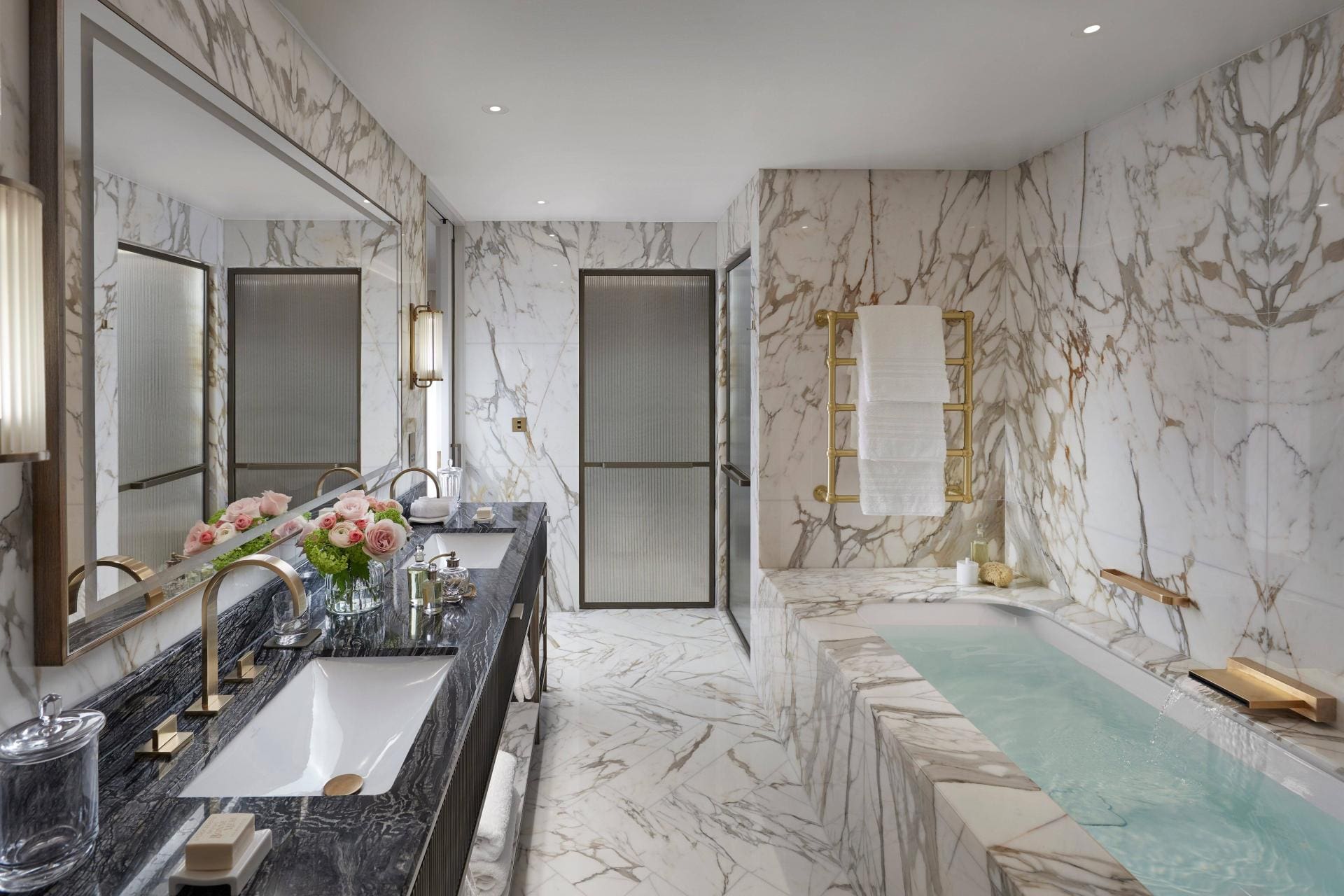
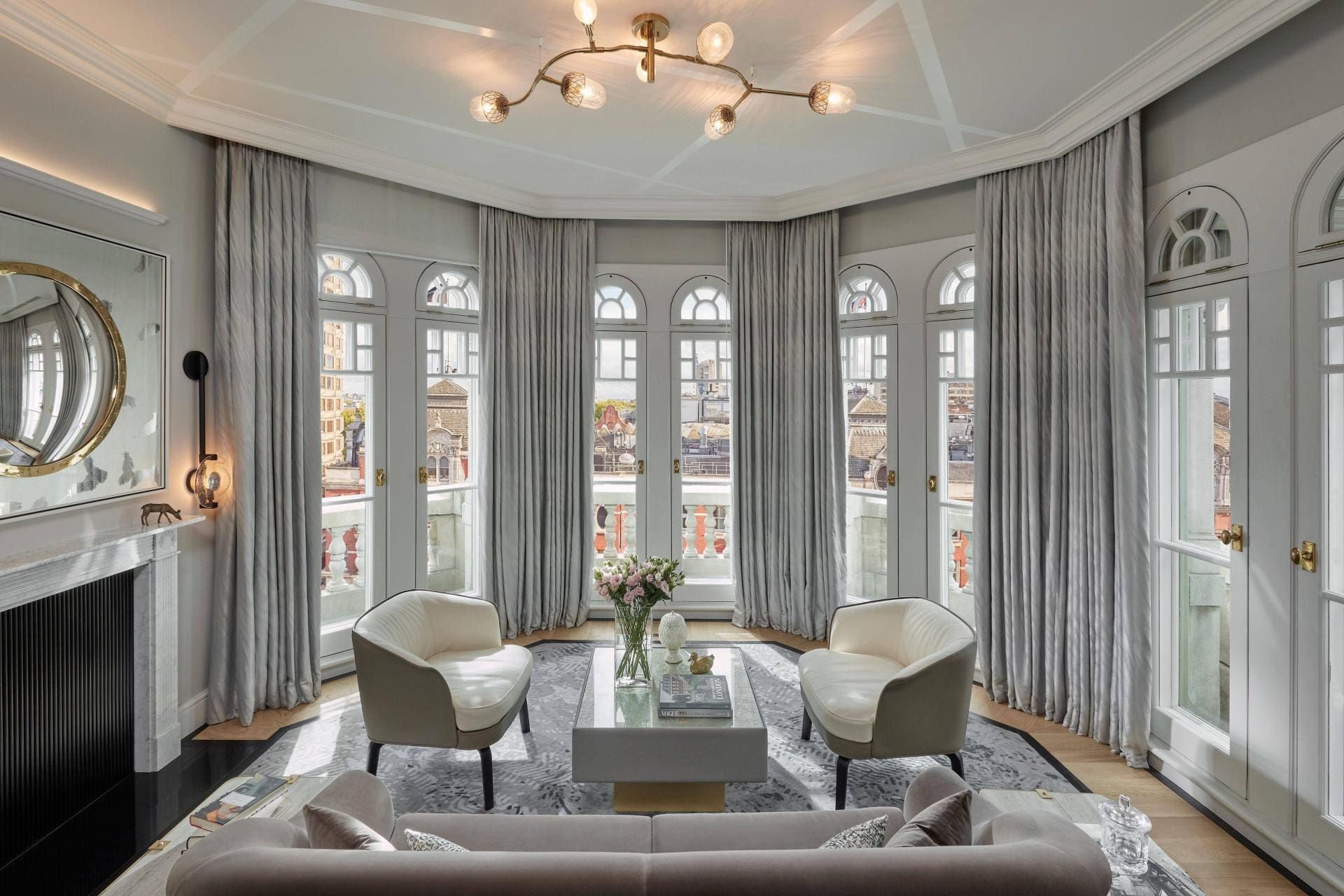
Downstairs, Dinner by Heston Blumenthal – where, ironically, breakfast is served – remains an unspectacular space, despite being repointed by New York’s Adam Tihany, the original ‘restaurant designer’. Perhaps that’s the point, given the theatrics of the food that served there. Grab a window seat around 11 am for a chance to see members of the Household Cavalry ride out from their Hyde Park barracks.
The Rosebery is an extraordinarily pretty, light and airy emporium for afternoon tea. Daniel Boulud’s Bar Boulud is a burgundy-and-coffee-coloured brasserie serving foie gras burgers and upscale croque monsieur. It caters to an extraordinarily international crowd, even for this part of town, and, judging by our visit, gets completely packed-out on a Saturday evening – when, somewhat bizarrely, the vibe becomes Courchevel après-ski party, owing, possibly, to the crowd-pleasing uncorking of big-ticket jeroboams and methuselahs.
Back in 2011, when the Candy brothers launched One Hyde Park with a celebrity-packed lunch party, they employed Heston Blumenthal and Daniel Boulud to provide the catering. The hotel continues to service the neighbouring apartments.
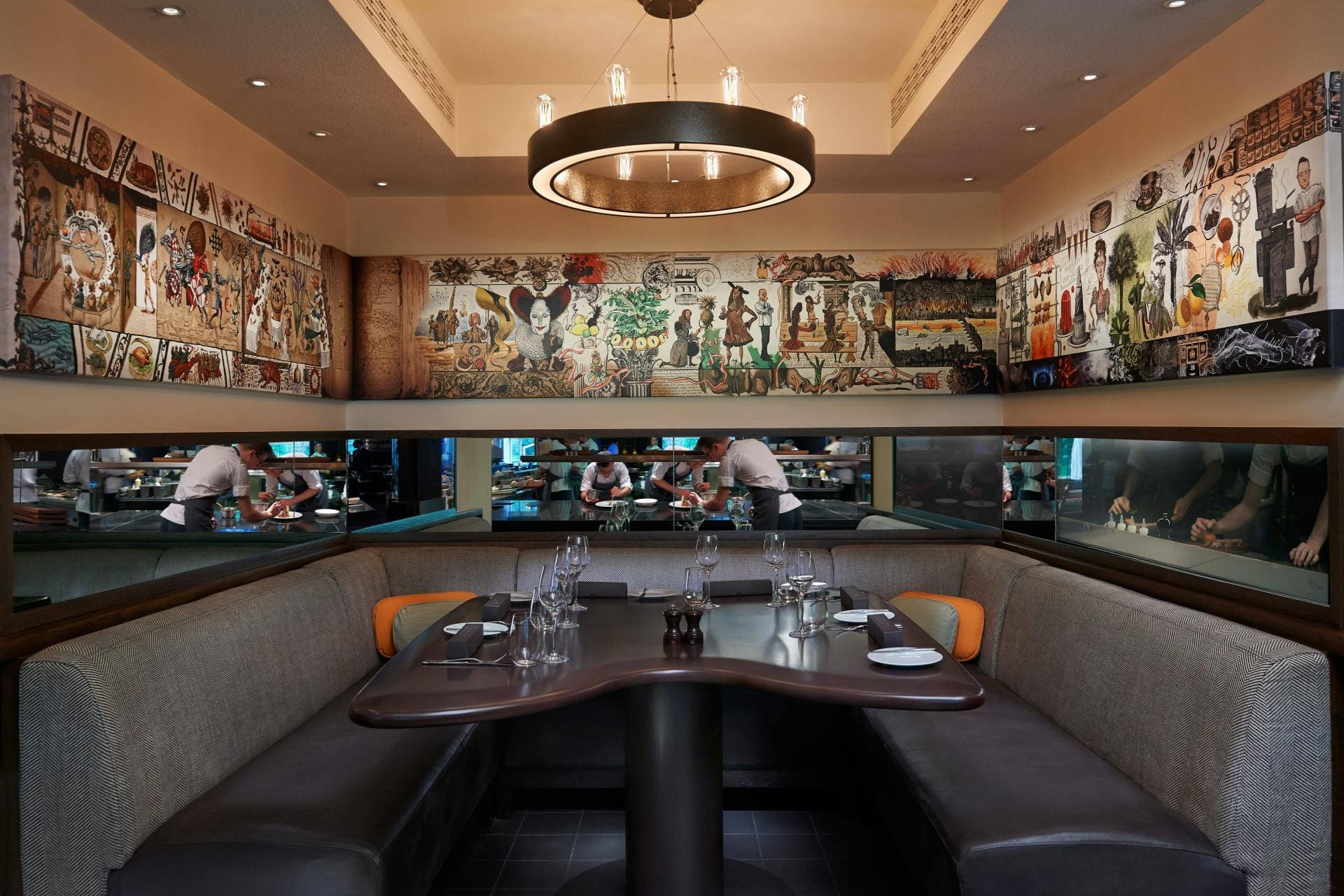
Super-CEOs, the sort who wake up at 5 am to crush a set of bicep curls before crushing the rest of their day, will be pleased to know they can pump and crunch in a comprehensively kitted-out fitness studio. (Why, in other flashy hotels, are gyms little more than converted cleaning cupboards?) Alongside the token assortment of Technogym treadmills and cross-trainers, there’s a decent smattering of dumbbells, a squat rack and one of those BMI machines that will analyse your wobbly bits and, for no extra cost, inform you that you’re chronically obese.
Down another level still is a spa, again rebooted by Tihany. It has 13 treatment rooms, we were told, and a slick, spot-lit 17-metre pool. There’s no Jacuzzi, however, which is a shame given how cold the pool is, and weird, given that elsewhere the hotel has gone to the effort of installing a ‘vitality’ plunge pool and ‘amethyst crystal’ steam room.
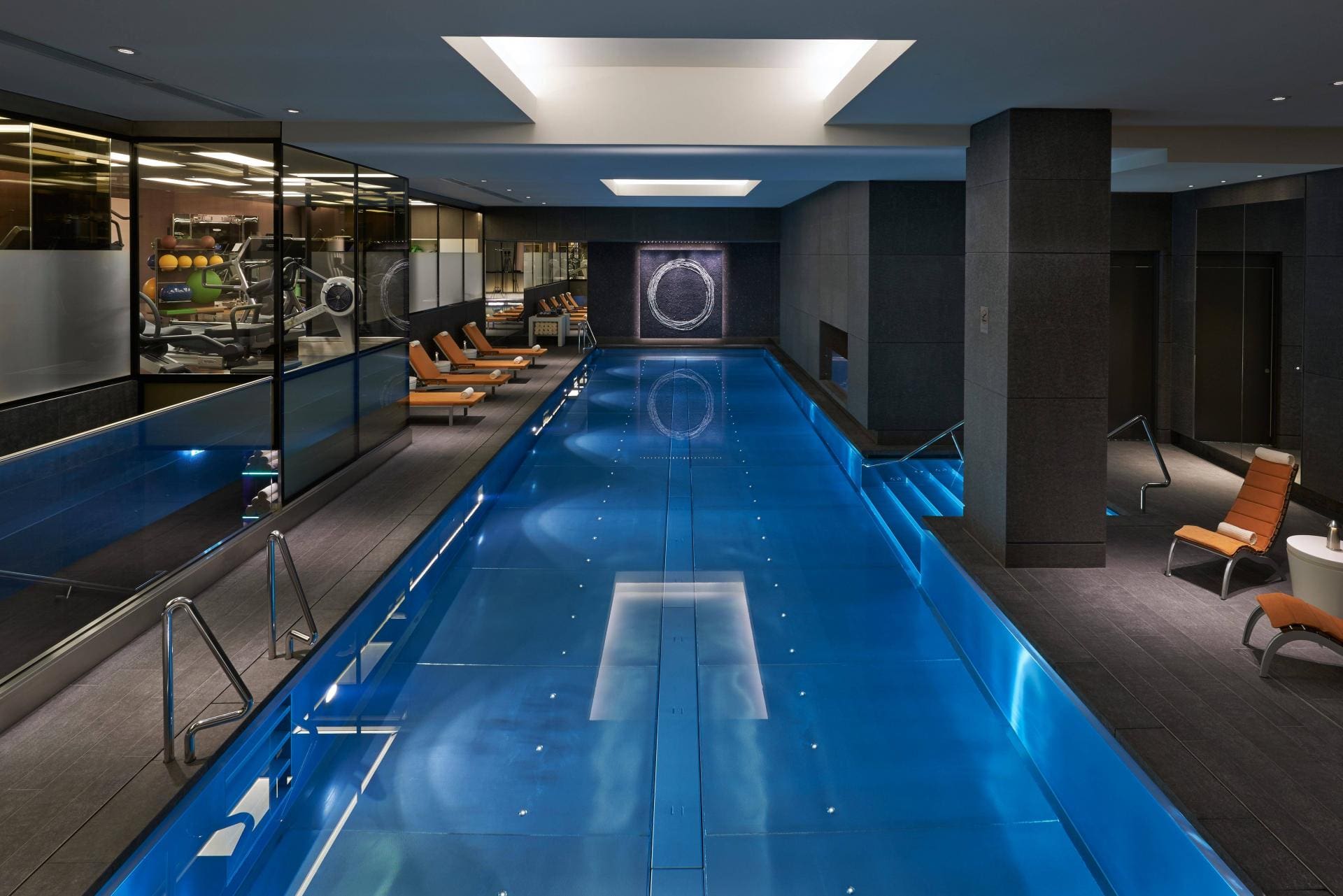
It’s clear that no expense has been spared in this old-London-meets-new-Orient overhaul. From antique mirrors that have been artistically gilded and etched with feathers, to the heft of marble that flows from lobby to reception and into every guest bathroom via grand sweeping staircases, Wang and Tihany have created a collection of interiors that, in contrast to the building’s theatrical façade, are delicate and tranquil and subtle and light (marble-on-marble-on-marble entrance lobby aside). It’s a classy and cleverly contemporary redesign of one of London’s most singular settings.
